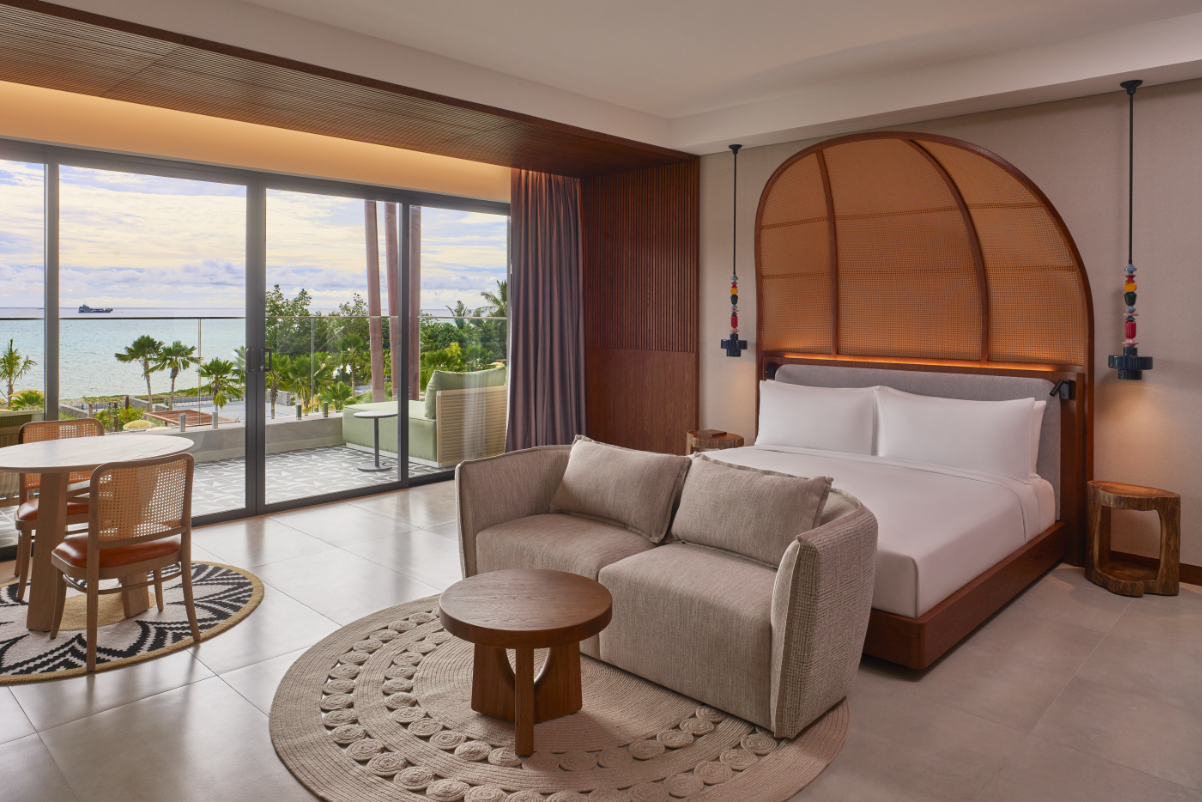Skift Take
Hilton's "investor day" on Tuesday included a 223-slide presentation. Here are three assertions that stood out to us.
Hilton held a private presentation for investment analysts at the Conrad Washington D.C. near its headquarters this week, and executives presented 223 slides.
For investors, a key detail was that Hilton expects to boost its adjusted EBITDA to at least $3.945 billion by 2026, or 27% higher than last year.
Skift obtained the presentation, and here are assertions by Hilton executives that stood out to us.
1. Hilton claims the world’s largest hotel pipeline.
Hilton projected that between now and 2027, it would grow its net rooms under management at a compound annual growth rate of 6.5%. That’s higher than the growth rates announced by Marriott, Accor, IHG, and Wyndham. If Hilton achieves that pace, it will manage 1.4 million rooms by the end of 2026.
Hilton said it controls about 20% of the rooms under construction worldwide, a bolder claim than any other peer company. It even claims to have 21% of rooms under construction in the Americas, which is a market where the hotel group already has a broad footprint. (The company defines ‘Americas’ as North, Central & South America, and Caribbean.)
“A big conversion opportunity appears in the European market as well as Hilton’s developing midscale brand, Spark,” wrote analysts at Melius Research in a report after attending the presentation.
Some investors have worried about the “quality” of the net unit growth. If much of the growth comes from lower-end, chain-scale hotels with lower revenue per available room, that could mean Hilton generates lower fees — a key driver of revenue and earnings.
However, Hilton executives “noted at the outset of the meeting that fees per room … are going up, not going down,” said Truist Research analysts in a report, noting that perhaps investor concerns in fee quality are unfounded.
“Our view is that the lower-end chain scales are white space for Hilton, so ‘go after it,’ especially because the growth is incremental and asset-light,” said the Melius analysts. “The alternative is lower overall fees, fewer dots on the map, and less brand/system value, in our opinion.”
2. Hilton is growing its loyalty program to drive more direct bookings.
Hilton said in its presentation that its loyalty members drive an industry-leading 64% of total room nights booked. Executives said their goal was to increase that to get that figure to 75% of occupancy “over several years.”
Morningstar estimated in a report that Hilton derives some 40% of its business today directly from its app and website. Such direct bookings are cheaper than acquiring customers through online travel agencies.
If Hilton could get its loyalty members to drive three-quarters of bookings, it would get even more direct bookings.
3. Hilton is investing heavily in technology.
Executives talked a lot to analysts about their investments in technology, which they said would help wring more profits out of operations.
They cited tools for business analytics, using artificial intelligence to better tailor marketing and services to guests, automating repetitive tasks, and improving efficiencies in the online booking of meeting space.
Hilton shared an eye-catching statistic that only 13% of its bookings include upsells to various add-on services. It is investing in technologies to improve its ability to sell ancillaries to guests.
Hilton said that when it came to setting rates for different types of room inventory, it was increasingly adopting automated “continuous” room rate pricing, which aims to adjust prices to changes in supply and demand signals, such as accounting for mass flight cancellations or large local concert events.
Today, the average hotel revenue manager only monitors and sets prices for a handful of hotels at most.
“Given automation possibilities, Hilton noted its intent for one revenue manager to have a portfolio of 100 hotels – impressive,” said analysts at Truist.
Accommodations Sector Stock Index Performance Year-to-Date
What am I looking at? The performance of hotels and short-term rental sector stocks within the ST200. The index includes companies publicly traded across global markets, including international and regional hotel brands, hotel REITs, hotel management companies, alternative accommodations, and timeshares.
The Skift Travel 200 (ST200) combines the financial performance of nearly 200 travel companies worth more than a trillion dollars into a single number. See more hotels and short-term rental financial sector performance.
Have a confidential tip for Skift? Get in touch
Tags: future of lodging, hilton, hotel development
Photo credit: The bedroom in a guest room at Hilton's Canopy by Hilton Seychelles, which opened in March 2024. Source: Hilton.
